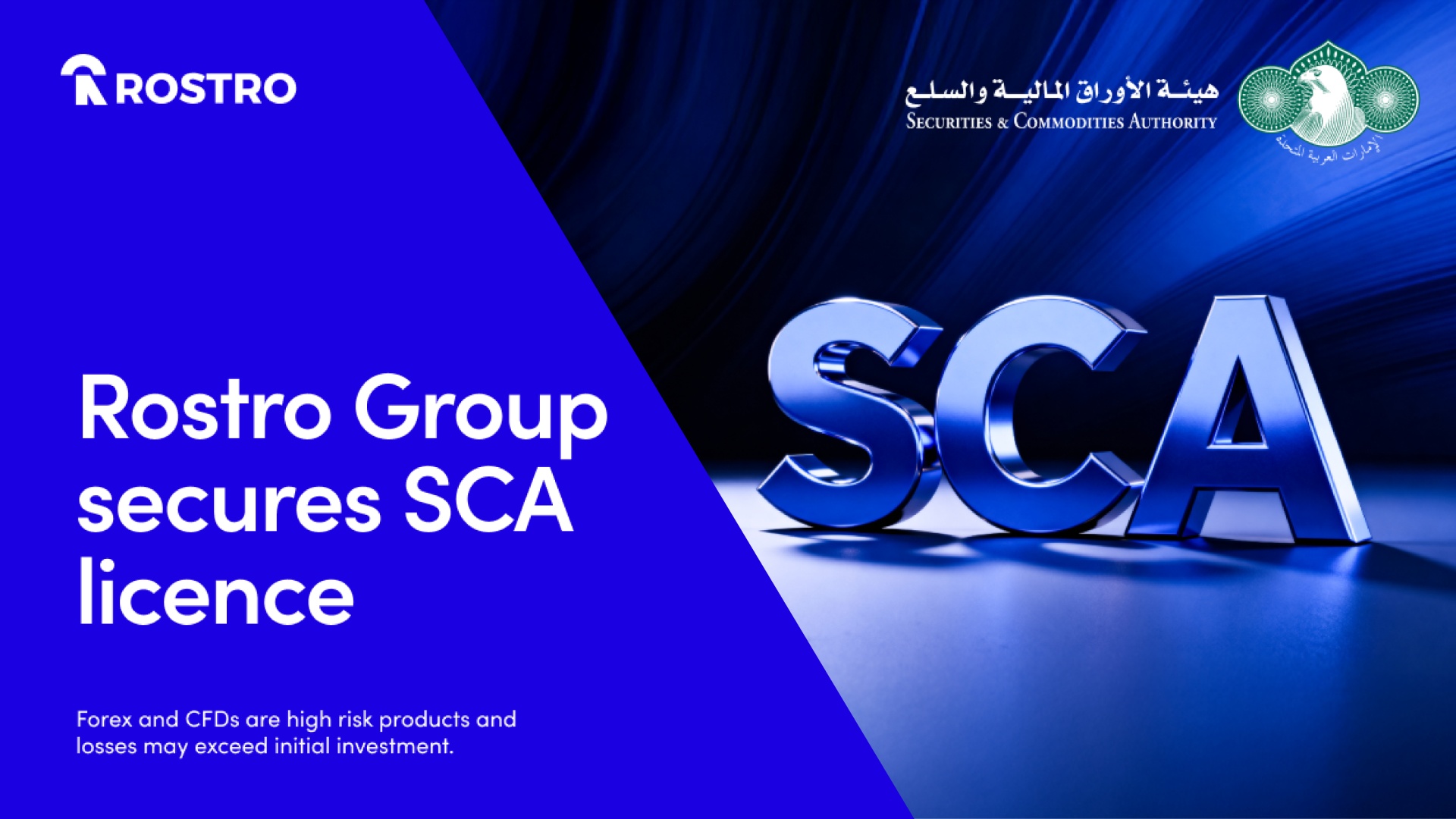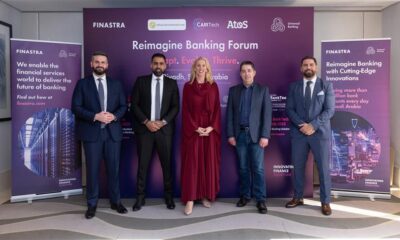Financial
Key Business Trends for 2025: AI Integration, Workforce Evolution, and Sustainable Strategies in Organisations

By Professor Fiona Robson, Head of Edinburgh Business School and School of Social Sciences, Heriot-Watt University Dubai
In 2025, the key trend is likely to be the development of further and wider uses of artificial intelligence within organisations, moving beyond organisations with an existing focus on technology. Obviously, the level of usage of AI will depend upon sectors and organisations but it is likely that uptake will continue to grow – and to diversify into areas or sectors that may not have previously been identified as logical places for AI.
Organisations will need carefully constructed communication strategies which can emphasise the benefits of AI and reassure stakeholders that it is not intended to completely remove humans from the organization. Some new roles are likely to be generated as well as some existing ones that need to be modified. A lot of AI tools still require some human intervention so staff may need to learn to work in a different way. Of course, change is always met with some apprehension and this may lead to a turnover of some staff, this isn’t always a bad thing as new staff may bring new expertise and ideas.
Where roles are being adapted organisations must invest in providing appropriate training and development for their employees. This will shorten the length of time before a positive impact may be seen from the new ways of working. It also needs to be acknowledged that the amount and focus of the training and development may be diverse across the organization. It is important that employees are confident and competent.
I expect the market for people who are highly skilled in the development of AI to become even more valuable within the marketplace so recruitment may need significant investment. This could include ‘golden hellos’ as well as generous overall reward packages. However, organisations do not have endless budgets and should build in a buffer zone – perhaps linking reward to an extended time period. They may also consider the conditions of penalties if leaving within a specified time period, particularly if they are likely to move to direct competitors. Existing employees may also become particularly attractive to competitors so staff retention will be critical and may include financial and intrinsic elements.
Technology will continue to offer new ways of working that will need to be evaluated by organisations to understand the potential advantages and disadvantages. Behind this decision is organisations’ approaches to how their organization is operating on a day-to-day basis. For some, hybrid working remains in place, to try and get the benefits from both office and from home. Understanding the needs of employees can help to shape strategies that will work for both parties.
Every year organisations benefit from cohorts of students fresh from universities who have the latest knowledge and skills which may not already be present in the organization. There is a real opportunity here for organisations to be more strategic in their relationships with universities so that there are mutual benefits around student employability. Obviously fresh graduates won’t know anything and everything, but their mindsets often give an alternative way of thinking about things which can be valuable.
Flexibility will remain a valuable tool for recruitment and retention, and this moves beyond hybrid working. Flexible reward programmes enable organisations to give employees the benefits that are most valuable to them. This could include opportunities to buy or sell annual leave or receive a higher education allowance for their family members. Traditionally many organizations haven’t formally assessed the effectiveness or popularity of different reward options, so this is an area for contemplation. I would hope that some organisations might invest in their existing employees to undertake degree level study as this can be beneficial for all parties.
Sustainability is expected to stay high up on the agenda but also to move into a deeper dive and not just focus on the surface level issues. Organisations will be thinking about how they can become sustainable in the ways that they operate and encourage their key stakeholders to do the same. Awareness of the UN’s sustainable development goals is on the rise and organisation’s may wish to focus on some of the most meaningful and relevant to their business. Organisatons will be aware that consumers are far more educated than they used to be in terms of environmental and sustainable practices and use this to aid their decision making when procuring products or services. To make a real impact, organisations need to move beyond informing their staff about what is happening in relation to sustainable and environmental issues. Colleagues should have opportunities to offer their ideas.
It is likely that Government’s will also increase their focus on sustainable and environmental issues, and this may be in the form of formal requirements but also in offering support to organisations who wish to make changes to support this agenda. Having a seat at the discussion table could be advantageous in trying to influence policy and be recognized for good practice.
Financial
Finastra’s Saudi Arabia Reimagine Banking Forum Spotlights Innovation, Trust, and AI in a Vision 2030 Financial Landscape

Finastra, a global leader in financial services software, brought together regulators, banks, fintechs, and technology leaders at the Saudi Arabia Reimagine Banking Forum in Riyadh to examine how the Kingdom’s financial sector can accelerate innovation while protecting trust, resilience, and customer value under Vision 2030.
The forum featured perspectives from regional and global experts, including Rudy Kawmi, Vice President for Middle East, Africa and Asia Pacific, Universal Banking at Finastra, along with senior leaders such as Abdulkarim Alsowaygh, Head of Advisory Services at TechArch, and Aymen Belhedi, Digital and Technology Transformation Leader at KPMG Middle East.
As the conversation turned to how banks can turn ideas into action, Finastra shared perspectives based on its long-standing work with financial institutions in the Kingdom, where it has supported banks since the early nineties through local expertise, established relationships and ongoing investment. The company referenced the role of modern core platforms like Essence, in supporting agility, compliance and customer-centric design. Finastra Essence was also recognized as a Leader for the 2nd consecutive time in the Gartner Magic Quadrant for Retail Core Banking Systems, Europe.
Across three panel discussions – Banking Today: Delivering delight in a hyper competitive world, Banking Tomorrow: Innovation, agility and relevance, and Practical AI: Leveraging AI for profit, safely and securely – speakers shared practical strategies to balance regulatory expectations, customer needs, and technology adoption.
Key insights from the Saudi Arabia Reimagine Banking Forum include:
Innovation anchored in trust and compliance
Panelists agreed that innovation in Saudi banking must begin with trust. Cybersecurity, regulatory alignment and security maturity were described as non-negotiables, not afterthoughts. Speakers highlighted the role of the Saudi Central Bank (SAMA) in setting clear guardrails through initiatives such as API-driven banking frameworks and the Regulatory Sandbox, enabling banks and fintechs to experiment in controlled environments while protecting consumers and financial stability.
From product proliferation to precision, lifestyle-integrated banking
The discussion underlined a shift from launching more products to delivering precise, contextual experiences. Banks in Saudi Arabia are under pressure to evolve from traditional service providers into lifestyle platforms that integrate payments, credit and everyday services into the digital journeys customers already use. With the risk of banking drifting into a utility model, where providers are interchangeable, panelists called on institutions to differentiate through relevance, immediacy and purposeful design, not just scale.
Ecosystem orchestration as the new competitive edge
Speakers stressed that no institution can innovate in isolation. Banks that act as ecosystem orchestrators, curating fintech, technology and cybersecurity partners while owning the “trust layer”, are better positioned to deliver new propositions quickly. Internal teams, advisors and partners form a single value chain. The conversation moved beyond capability lists toward how those capabilities are combined, governed and brought to market at speed.
Data and AI turning trusted information into intelligence
Data was described as a critical and often underused asset. Panelists highlighted that the real opportunity lies not in collecting more data but in converting trusted data into actionable intelligence. In this context, AI and generative AI can help banks move from reactive service models to proactive, personalized engagement, provided governance keeps pace. With the right tools and controls, small teams can now deliver improvements in productivity and customer experience that previously required much larger workforces.
Practical, ethical AI with humans firmly in the loop
The AI discussion focused heavily on ethics, explainability and human oversight. Panelists warned against black-box systems in areas such as credit decisions and collections, where AI outcomes directly affect people’s lives. They emphasized the need to identify and address bias in training data and to keep humans accountable for final decisions. AI was positioned as a powerful tool to automate repetitive tasks, assist agents and accelerate analysis, while freeing people to concentrate on higher value work.
Technology is available, but adoption remains gradual
Speakers noted that while the technology to support next-generation services is already in place, adoption timelines can vary. Some innovations introduced in pilot phases have taken time to progress to full rollout, reflecting the sector’s careful approach to implementation. The discussion highlighted opportunities for continued progress in areas such as real time, transparent cross-border payments and fully digital account opening that reduces the need for in-branch processes.
Across all sessions, there was a consistent message: Saudi Arabia is setting a high bar for responsible innovation by combining a progressive regulator, a clear national agenda and banks that are re-architecting for trust, speed and inclusion. The future of banking in the Kingdom will belong to institutions that innovate boldly, design for resilience, and earn customer trust every day.
Financial
Rostro Group Enters UAE with New SCA Licence Amid the Country’s 20% Fintech Growth Surge

Rostro Group, an international diversified fintech and financial services group, has obtained a Category 5 license from the UAE Securities and Commodities Authority (SCA), marking a significant step in its long-term commitment to shape the UAE’s future financial ecosystem.
The UAE’s fintech ecosystem continues to expand at an exceptional pace, supported by progressive regulation, rising investor appetite, and strong government initiatives. Recent industry reports from bodies such as the MENA Fintech Association and Magnitt indicate that the UAE consistently attracts over 40–45% of all fintech investments in the region, reinforcing its position as the leading fintech hub in MENA.
Looking ahead, the sector in the UAE is projected to grow at a compound annual rate of more than 20% over the next five years, driven by increasing adoption of digital payments, rapid expansion in wealth-tech and digital brokerage services, and continued regulatory enhancements from bodies such as the SCA and ADGM. With this momentum, the UAE is well-positioned to remain a regional centre of innovation, capital formation, and digital financial transformation.
With UAE Securities and Commodities Authority (SCA) strengthening oversight and raising industry standards, the approval recognizes Rostro Group as a compliant and trusted participant in the country’s expanding financial landscape. It also allows the Group to operate in line with UAE’s expectations for transparency, investor protection and responsible market engagement.
Based in the UAE, the Group is led by CEO Michael Ayres, who has long-standing experience in the region’s fintech sector. Speaking about the SCA approval, Ayres highlighted that Dubai and Abu Dhabi’s rapid evolution into a future-ready financial ecosystem is unmatched.
Ayres said, “We at Rostro Group see the UAE as one of the most forward-thinking financial centres, one that will soon rival leading centres like London, Singapore or New York. Securing this licence deepens our alignment with the country’s vision to build a tech-first, institutionally robust financial ecosystem and propels our contribution to its next phase of growth.”
Rostro Group’s multi-brand structure is built to serve diverse categories of investors through a unified global ecosystem. Its Scope Prime division supports institutional clients with industry leading trading infrastructure, while Scope Markets offers individuals streamlined access to global trading and investing opportunities.
In recent years, the product offering of Rostro Group has been widened to include access to over 60 regional CFD equities, as well as the development of proprietary CFD indices to mirror the performance of the Dubai and Abu Dhabi stock markets.
Local banking relationships have already been established. In addition, Rostro’s Scope Prime division is now ready to provide multi-asset prime brokerage services to financial institutions across the GCC, whilst the retail client-facing Scope Markets division has the ability to offer account types denominated in multiple currencies including AED and USD.
Financial
AI gives Gulf banks the edge in managing liquidity with confidence

Integrated platforms and data-driven agility will allow IFIs to meet rising expectations and shape global standards
By Matthew Nassau, Business Architect, Treasury & Capital Markets at Finastra
Markets move in cycles. Each generation experiences most of the things that previous generations have endured (bull or bear markets, natural disasters, geopolitics, …) punctuated by turning points from which the future takes a distinct path (powered flight, the transistor, The Beatles, …). These highlights are often recognized early on as important in their day and seem to appear ‘overnight’, and yet have taken years of development and formation to appear in our consciousness, while the lasting extent of their transformative power is not fully appreciated.
Generative AI (GenAI) fits the model described above, poised as it is to revolutionize treasury and capital markets by markedly altering decision-making processes for market professionals. From conversational finance to predictive analytics, AI is evolving from a mere assistant to becoming a crucial decision-making tool. In Gulf Cooperation Council (GCC) countries, GenAI could add between USD 21 billion and 35 billion each year, on top of roughly USD 150 billion that existing AI technologies are expected to contribute. That represents about 1.7 to 2.8% of the region’s current non-oil GDP.
To deliver on this potential, it is essential that financial institutions have access to high-quality data, upon which GenAI can infer connections, deliver insights and enable actions.
Data has never looked so good
Data has long been treated as one of the most important assets in financial services. Vendors have built major businesses supplying real-time market feeds, and institutions invest heavily to safeguard customer information in every form. The value is clear. What is changing is how much more that value can grow as GenAI gains access to richer and more precise datasets. Large language models can spot relationships and trends that were previously buried, turning raw information into forecasts, alerts and actions that support commercial and risk decisions.
Unlocking that potential requires broader access to the information that treasury teams already rely on. Data lakes and warehouses form part of the picture, but they rarely capture everything. Treasury management systems are a prime example. Their reporting evolves constantly and plays a central role in liquidity decisions, yet much of it remains confined within the system. By making these reporting histories available to GenAI, banks can reveal patterns over time, flag emerging opportunities or risks and prompt timely intervention.
Timing is everything
To show how quickly things have shifted, consider a discussion I had with a major European bank a few years ago. The team was exploring how to treat treasury and capital markets data as a strategic asset without forcing everything into one central system. Their vision was a unified data layer where information could stay within existing applications yet still be accessed, combined and analyzed by staff using low code tools. The goal was to shift toward more data-driven decision making across the business and to uncover new sources of commercial value.
The concept was sound, but the technology required to deliver it at scale was simply too expensive and complex at the time. The bank had to narrow its ambitions and proceed with smaller, tactical initiatives. Artificial intelligence was not even part of the conversation. It felt experimental and far removed from daily operations.
Looking back, the idea wasn’t premature in strategy, only in timing. GenAI now makes this kind of agile, distributed data insight far more realistic.
‘Go big or go home’ – not any more
Expectations have moved on as technology has matured and become easier to access. The old way of classifying data projects as either short-term tactical fixes or long-term strategic overhauls no longer applies. GenAI changes the conversation. It shifts focus from where data lives to how much value it can generate. Deploying AI in specific functions like operations, the front office or reconciliation isn’t a stopgap. It’s a practical way to unlock intelligence quickly.
What will determine success is an institution’s ability to surface a wide range of data, ensure its accuracy and let AI learn from it. This doesn’t require a massive transformation program from day one. Starting with focused use cases can improve efficiency, reduce manual work and reveal valuable insights straight away. As more processes become AI-enabled, those individual wins begin to connect, creating a stronger and more intelligent foundation across the entire organization.
Outcomes lead to incomes
When a technology is still emerging, no one can predict with certainty how far its influence will reach. The best indicators often come from those willing to adopt early and test ideas in the real world. Many concepts compete for relevance, and only a few will ultimately reshape how people work.
The organizations that benefit most are the ones comfortable experimenting, moving quickly and learning as they go. GenAI encourages exactly that mindset. It allows teams to explore and refine new approaches by tapping into the data they already hold. The results show up in lower costs, stronger client value and healthier margins.
This shift is not about replacing existing business models but enhancing them. Each step forward can deliver outsized returns for firms confident enough to start now.
-

 Tech News1 year ago
Tech News1 year agoDenodo Bolsters Executive Team by Hiring Christophe Culine as its Chief Revenue Officer
-

 VAR8 months ago
VAR8 months agoMicrosoft Launches New Surface Copilot+ PCs for Business
-

 Tech Interviews2 years ago
Tech Interviews2 years agoNavigating the Cybersecurity Landscape in Hybrid Work Environments
-

 Tech News5 months ago
Tech News5 months agoNothing Launches flagship Nothing Phone (3) and Headphone (1) in theme with the Iconic Museum of the Future in Dubai
-

 Tech News2 years ago
Tech News2 years agoBrighton College Abu Dhabi and Brighton College Al Ain Donate 954 IT Devices in Support of ‘Donate Your Own Device’ Campaign
-

 Editorial1 year ago
Editorial1 year agoCelebrating UAE National Day: A Legacy of Leadership and Technological Innovation
-

 VAR1 year ago
VAR1 year agoSamsung Galaxy Z Fold6 vs Google Pixel 9 Pro Fold: Clash Of The Folding Phenoms
-

 Cover Story9 months ago
Cover Story9 months agoUnifonic Leading the Future of AI-Driven Customer Engagement

























